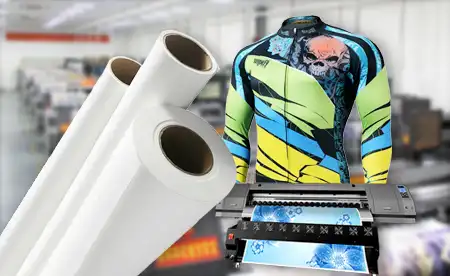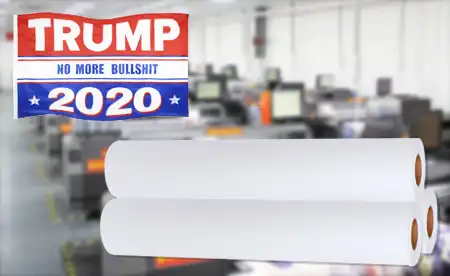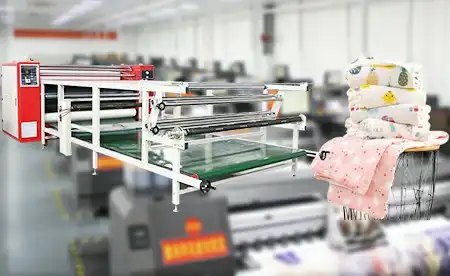HOT SALE
APPLICATION
Phone:+86-15215969856 E-Mail: 396838165@qq.com
Dye sublimation printing has seen an incredible journey, evolving from a little-known technique to a popular choice for creating top-notch textile designs and images. Thanks to digital advancements and new materials like Sublimation Paper and DTF (Direct to Film) film, this field has grown to touch industries such as fashion, sportswear, home decorations, and marketing goods. Learning about the history of this technology gives us a peek into its exciting future.

Origins of Dye Sublimation Printing
The tale of dye sublimation started with basic trials of moving pictures onto different surfaces with heat.
Early Techniques in Textile and Image Transfer
Back in the mid-1900s, screen printing was the go-to for fabric designs. But it wasn’t great with colors, accuracy, or speed. Early heat-based methods came as a fresh option. They used warmth to shift dyes from a sheet to cloth or other materials. This was the starting point for sublimation printing. It uses heat to turn solid dye into a gas, skipping the liquid stage, and sticks right onto polyester threads.
The Development of Heat Transfer Processes
Improvements in heat printing brought clearer and brighter results. As Printer machines got sharper and Sublimation Ink became tougher under high temperatures, the stage was set for modern dye sublimation. Adding special base papers also boosted color control and the quality of transfers.
The Emergence of Sublimation Paper
A major shift in sublimation printing happened with the creation of unique transfer sheets. These were made to soak up ink well and release it perfectly during the heat press.
Key Innovations in Sublimation Materials
Changfa Digital stands as a leading maker of Sublimation Paper. They’ve offered digital printing solutions for over 15 years. Their factory handles everything from raw paper to coating, cutting, and shipping worldwide. These breakthroughs ensure steady print results across various paper weights—from light 29gsm to sturdy 100gsm—and sizes up to 190cm wide or more.
Our key offerings include 40gsm, 50gsm, 60gsm, 70gsm, 90gsm, and 100gsm papers, with widths between 61cm and 320cm. Such progress lets Printer machines manage big projects while keeping colors bold and drying quick.
How Sublimation Paper Changed the Printing Industry
These material upgrades sparked a huge change in how things are made. We brought in a top-notch coating machine from Germany for daily Sublimation Paper production. This allows huge output—up to 3000 Tons each month. It also helps companies like Changfa Digital send out 120 Containers globally every month.
Applications Across Industries
Sublimation Paper is used in clothing, especially sportswear. It’s also great for promo stuff like mugs and mousepads. You’ll find it in home items like curtains or pillows, and even in signs. Our digital paper shines in kids’ bibs with bright, lively prints.
The Rise of Direct to Film (DTF) Technology
As the need to print on fabrics beyond polyester, like cotton or dark clothes, grew, DTF became a handy new choice.
What Sets DTF Apart from Traditional Methods
Unlike sublimation, which needs polyester materials, DTF lets you print designs on PET film with special inks and powders. Then, you transfer them to any type of fabric using heat. This opens up options that sublimation alone can’t offer.
Advancements in DTF Equipment and Inks
Item No.: DTF Ink Color: BK, CY, MG, YL, WT Used For: DTF Printer shows how custom inks create bright shades that stay strong even after washing. Films come in types like single-sided PET film, double-sided cold tear film, Glitter, and Gold cold tear film. Each type meets different creative demands.
Integration of DTF in Modern Printing Workflows
DTF blends easily into digital setups. It works with common RIP software and Epson-based printheads. Plus, it needs less prep work than DTG (Direct-to-Garment). This makes it perfect for small custom orders or quick turnarounds.
Comparing Sublimation and DTF Printing Techniques
To pick the right method, you need to know how they differ at their core.
Differences in Materials, Processes, and Output
Sublimation works only on polyester surfaces. It transfers ink through a Heat transfer machine using Sublimation Paper straight onto fabric. On the other hand, DTF uses PET film as a middle step. You apply powder glue and then heat press it onto any fabric, even cotton.
Sublimation gives sharp, long-lasting prints on light polyester. But it struggles with dark or cotton materials. Meanwhile, DTF handles full-color designs on nearly any surface, no matter the shade. However, it might need extra steps like curing the powder.
Advantages and Limitations of Each Method
Sublimation is awesome for speed and low cost on big polyester projects. Its prints feel soft and blend into the fabric. But it’s not flexible with other materials.
DTF works on more fabrics but can cost more due to extra stuff like PET films and powders. Also, its prints might feel a bit thicker than sublimated ones.
Use Cases for Sublimation vs. DTF
Go for sublimation if you’re making sportswear uniforms or promo flags where polyester is common. Choose DTF for cotton tees or small fashion batches that need variety in colors and textures.

Technological Evolution and Market Expansion
The growth of both methods mirrors a bigger move toward digital personalization around the world.
Milestones in Printer and Ink Development
Great smoothness and printing 20 meters at 360dpi without a hitch prove how today’s inks are super reliable for long runs. Modern Printer machines support multiple nozzles, like the Epson I3200 nozzle (over 8 nozzles). This ensures fast work with steady quality.
The Role of Digitalization in Print Customization
Online tools let artists whip up custom designs fast. Automation also speeds up the process—from uploading art to pressing the final piece. This means quick delivery, even for tricky orders.
Global Growth and Adoption Trends
With more people wanting personalized items everywhere—from online stores to small local shops—the use of Sublimation Paper and DTF tech is soaring. This is true in places like Asia-Pacific, North America, and Europe.
Changfa Digital: A Trusted Partner in the Printing Industry
As a top name in printing supplies and tools, Changfa Digital shines bright.
Changfa Digital is a skilled maker of Sublimation Paper and has provided digital printing help for more than 12 years.
Overview of Changfa Digital’s Product Line
Sublimation Paper and Ink Solutions
50gsm Factory Supply High Quality Jumbo Roll Sublimation Paper: Great transfer rate, awesome heat effect, huge ink hold, and quick drying.
Printers and Heat Transfer Machines
Changfa Digital, though just starting in some areas, owns its own ironing tools and Printer machines. This shows their deep know-how not just in supplies but also in blending hardware into workflows.

Tissue Paper for Printing Applications
They provide protective Tissue Paper rolls, like 30GSM white or grey paper, up to 182cm wide. These are key during heat pressing to stop ghosting or ink spills.
Commitment to Quality and Innovation
We have a skilled crew ready to help with expert services. Plus, with 24-hour support worldwide, customers get help anytime during their work cycles.
FAQs:
Q1: What is the main difference between Sublimation Paper and DTF printing?
A: Sublimation uses heat-sensitive colors applied through special paper onto polyester cloth at high heat. It’s perfect for soft prints on light polyester. On the flip side, DTF prints on PET film first, then moves designs to any fabric, including cotton, with sticky powder and a Heat transfer machine.
Q2: Can Sublimation Paper be used with cotton fabrics?
A: No, regular sublimation bonds dye straight into polyester fibers under heat. Cotton doesn’t allow this bond unless it’s coated with special stuff. Even then, the results aren’t as good as with true polyester sublimation.
Q3: Why choose Changfa Digital as a supplier?
A: Changfa Digital manages it all—from raw paper to coating, cutting, and shipping worldwide. Their wide range, like 40gsm to 100gsm papers up to 320cm wide, plus strong shipping skills, makes them a great choice. Whether you’re growing your business or starting fresh, they’ve got you covered.







